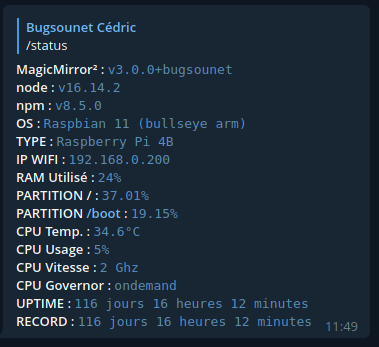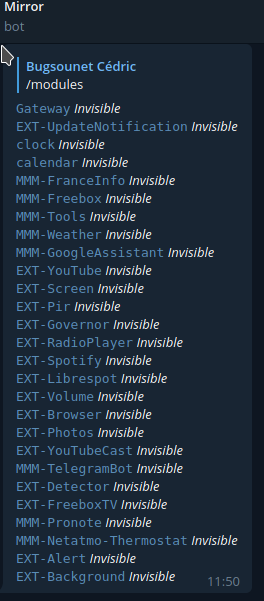Read the statement by Michael Teeuw here.
working module Raspberry Pi 4 and PIR?
-
I’m looking for a way (module) if possible to somehow black the screen and then light it up with a motion sensor (PIR) together with Raspberry Pi 4, if that’s not possible, then is there any module that works with RPi 4 that turn of the HDMI and turns on the HDMI port with motion sensor.
I have tried some but seems it doesn’t work with RPi4.
-
@DariBer
The simplest way to do this is to use a presence sensor that lights up lamps, and connect the sensor to the monitor’s power.
When someone approaches it turns on, and turns off the monitor when no one is around.
It can be done in other ways, but it will be much more complex. -
@Murky3057
Not sure I understand you here.
Could you please describe the thing with “connect the sensor to the monitor’s power”? You mean to connect the monitor to a remote witch like a zigbee or z-wave (or wifi) and power on/off that switch? So basic cut the power to the monitor? -
@DariBer
Yes, that’s what I imagined.
To be as simple as possible.Sorry for my english, I’m using a translator.
-
OK, I had that in mind, my problem is, when my monitor turnes on, it start some kind of splash screen that is pink/purple with Benq logo before it’s totally tuned on, I find that so annoying to see. That’s the reason I’m not going that path :)
-
@DariBer
Another solution is to create a script to run the command “xset dpms force off” to turn off the monitor and “xset dpms force on” to turn it on.
Use this video as an example to create something similar. -
I give a lot of courage for find ;)
-
@bugsounet your standalone solution is archived, so not very helpful .
-
-
https://github.com/paviro/MMM-PIR-Sensor
I’m using it with raspi zero W with sensor and works great


